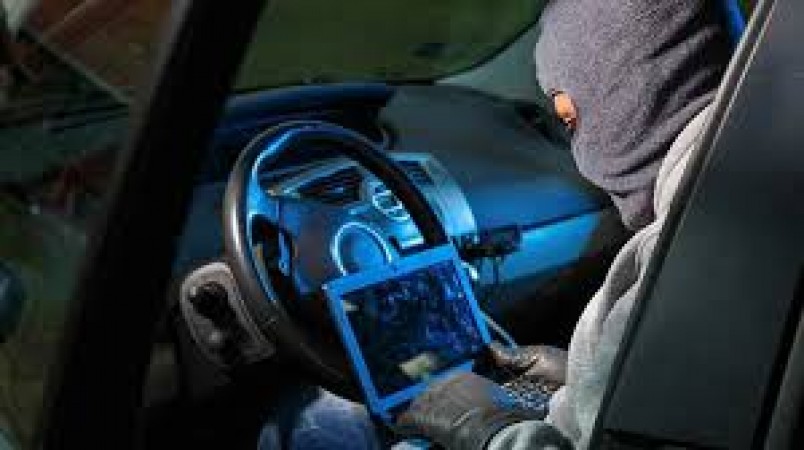
In today's technologically advanced world, cars are not just mechanical marvels but also sophisticated computers on wheels. While this brings convenience and connectivity, it also opens up new avenues for hackers to exploit vulnerabilities in vehicle systems. From remote hijacking to unauthorized access, car hacking poses a serious threat to drivers and their safety. Simply closing the car lock-window is no longer enough to ensure security. Here are five effective ways to safeguard your vehicle from potential cyber threats:
Just like your smartphone or computer, your car's software needs regular updates to patch security flaws and vulnerabilities. Manufacturers often release software updates to address known issues and enhance security measures. By staying vigilant and installing updates as soon as they become available, you can significantly reduce the risk of falling victim to car hacking.
Modern vehicles are equipped with electronic control units (ECUs) that govern various functions, from engine management to infotainment systems. These ECUs rely on firmware to operate, and outdated firmware can leave them susceptible to exploitation by hackers. Make sure to check for firmware updates regularly and apply them promptly to fortify your vehicle's defenses.
Many modern cars come equipped with Wi-Fi connectivity, allowing passengers to stay connected on the go. However, connecting to unsecured or public Wi-Fi networks can expose your vehicle to potential security threats. Hackers can intercept data transmissions and gain unauthorized access to your car's systems. Whenever possible, use secure, password-protected Wi-Fi networks to minimize the risk of interception and hacking attempts.
Consider using a virtual private network (VPN) when connecting to Wi-Fi networks, especially when accessing sensitive information or transmitting data between devices. A VPN encrypts your internet traffic, making it more difficult for hackers to eavesdrop or intercept communications. By adding an extra layer of security, a VPN can help safeguard your vehicle from potential cyber threats.
While remote access features offer convenience and flexibility, they also present a potential security risk if not properly secured. Hackers can exploit vulnerabilities in remote access systems to gain unauthorized control over your vehicle, potentially compromising your safety and privacy. Consider disabling remote access features that you do not regularly use, such as remote start or unlock, to reduce the attack surface and mitigate the risk of car hacking.
If your vehicle offers remote access capabilities, enable two-factor authentication (2FA) whenever possible. 2FA adds an extra layer of security by requiring users to provide a second form of verification, such as a code sent to their mobile device, in addition to their username and password. By implementing 2FA, you can enhance the security of remote access features and deter unauthorized access attempts.
In addition to safeguarding against digital threats, it's essential to protect your vehicle from physical tampering and theft. Investing in physical security measures such as steering wheel locks, car alarms, and GPS tracking systems can deter thieves and make it harder for hackers to gain access to your vehicle. By combining digital and physical security measures, you can create a robust defense against car hacking and unauthorized access.
Consider using RFID-blocking technology to protect your key fob from relay attacks, where hackers intercept and amplify the signal from your key fob to gain entry to your vehicle. RFID-blocking wallets or pouches can prevent hackers from skimming your key fob's signal, reducing the risk of unauthorized access and car theft.
Knowledge is power when it comes to defending against car hacking. Stay informed about the latest security threats and vulnerabilities affecting vehicles, and take proactive steps to mitigate risks. Regularly monitor your vehicle for any unusual behavior or signs of tampering, such as unexpected dashboard warnings or unfamiliar devices connected to your car's network. By remaining vigilant and proactive, you can minimize the likelihood of falling victim to car hacking.
Consider undergoing security awareness training to learn about common cyber threats and best practices for securing your vehicle. Many automotive manufacturers and cybersecurity organizations offer resources and training programs to help drivers better understand and address security risks. By educating yourself about potential vulnerabilities and how to mitigate them, you can take proactive steps to protect your vehicle and personal information from cyber threats.
By implementing these proactive measures, you can significantly reduce the risk of falling victim to car hacking and protect your vehicle, your safety, and your privacy in the digital age.
This latest edition car of BMW is more expensive than a 2 BHK flat in Noida, launched in India
10 Foods You Won't Find on Your Indian Dinner Plate: And Why
India Eyes Maiden Olympic Archery Medal, Coach Kim Hyung Tak Optimistic